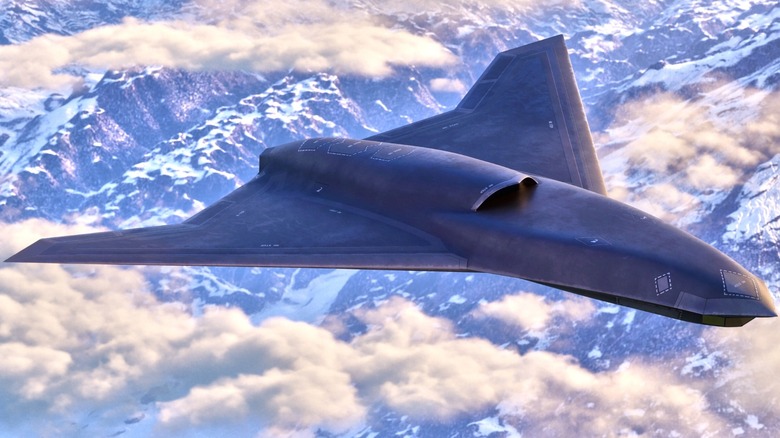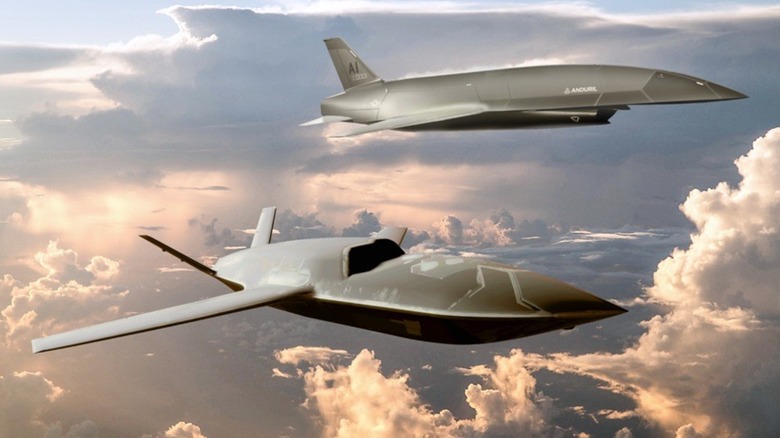Lockheed Martin's Skunk Works Project Is No Longer A Secret: Meet The Vectis Combat Drone
Lockheed Martin's Skunk Works has developed some of the most monumental aircraft of all time, including the legendary super-fast SR-71 Blackbird. Still, one thing it rarely does is disclose its latest and greatest to the public. Surprisingly, on September 21, 2025, Skunk Works revealed the Group 5 lethal collaborative combat aircraft (CCA), Vectis. It's the latest addition to the CCA program, designed to work in tandem with crewed fighters.
The Vectis is a wingman drone in what is known as Manned-Unmanned Teaming (MUM-T). Essentially, a wingman drone flies alongside a crewed aircraft and engages enemies on the ground or in the air, increasing lethality while decreasing the danger to pilots. The Vectis is touted as an autonomous system that will unlock integrated capabilities while traveling at incredibly high speeds. It is capable of integrating and working alongside any 5th-generation aircraft via Lockheed's Multi-Domain Combat System (MDCX).
While Lockheed surprised the world with its announcement, the company has yet to complete a prototype. One is being produced, though Skunk Works hasn't revealed any specifications or detailed its capabilities. What is known revolves around the existing CCA program, the fact that it integrates with 5th-generation aircraft, and that it will eventually become available to both the United States military and its allies. That's an interesting and added surprise, as Skunk Works doesn't often produce aircraft for the open market. Only a handful of its vehicles, such as the F-104 Starfighter, have flown for other nations.
The Vectis Collaborative Combat aircraft
The Vectis announcement only included an artist's rendering of what it might look like, with no details provided regarding its specifications, but some information was disclosed. The Vectis is being designed as a multi-role aircraft capable of intelligence, surveillance, and reconnaissance (ISR). Additionally, it will perform precision strikes, offensive and defensive counter-air operations, and electronic warfare (EW). It will feature multi-domain connectivity, either as a sole operator or as part of a MUM-T formation. The F-35 Lightning II is an ideal candidate to work alongside the Vectis.
Given Lockheed's artist rendering, the Vectis has a modified delta wing with engine intakes set atop the aircraft. As a Group 5 uncrewed aerial vehicle (UAV), it will weigh over 1,320 lbs. and fly higher than 18,000 feet. Like the F-35 and other 5th-generation aircraft, the Vectis will feature stealth capabilities, enhancing survivability and reducing detection. It will also be affordable, though Lockheed has yet to reveal the unit cost.
Additionally, Vectis will be an open system, reducing what the company calls "vendor lock," which helps the aircraft better align with Government Reference Architectures. That's a fancy way of saying it will be produced under a standardized framework to reduce costs and enhance production efficiency. While the Vectis is certainly an interesting addition to the CCA, it's not the only contender. The pictured drones are the General Atomics YFQ-42A and Anduril's YFQ-44A. Both were selected by the U.S. Air Force in March 2025 as designated CCAs, indicating that Lockheed's Skunk Works has some competition.

